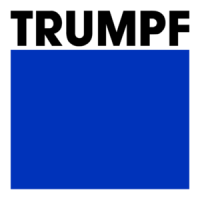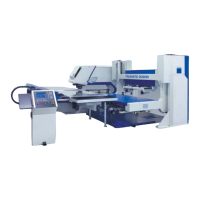Do you have a question about the Trumpf BendMaster 150 and is the answer not in the manual?
Explains CE marking, EC Declaration of Conformity, and compliance with safety standards like ANSI B11.3.
Discusses machine dangers from improper use and defines intended use, including allowed and disallowed operations.
Details dangers from switch cabinets, laser radiation, and magnetic fields, including specific warnings and notes.
Outlines safety equipment safeguarding the danger zone and operational requirements for safety devices.
Covers observing warnings, training personnel, duty of care, water protection, and using correct spare parts and software.
Details space requirements, floor quality, flatness tolerances, and consultation needs for structural analysts.
Details required pressure, air consumption, supply line specifications, and quality requirements for compressed air.
Covers electrical installation requirements, IEC/NEC conditions, electrical power supply specifications, and connected loads.
Outlines arrangements and procedures for system transport, including preparation, dimensions, and permitted auxiliary tools.
Identifies key components of the BendMaster and TruBend press brake system, including the gripper, sensors, and cabinets.
Details the portable manual control unit, its operating elements, and the function of buttons and LEDs.
Covers safety information related to workpiece suspension, status display icons, software version views, and user settings.
Guides on switching on the BendMaster, logging in, releasing emergency stops, and referencing axes.
Explains the necessity of referencing axes, especially the regripping station, and how to identify unreferenced axes.
Covers settings in TruTops Bend for BendMaster control V7.0+, productivity package procedures, and adjusting old projects.
Details the process of searching for areas and stacks, including image recording, zoom functions, and handling recognition problems.
Guides on opening and starting programs, selecting execution methods, setting breakpoints, and interrupting/resuming programs.
Details how to display and acknowledge errors/messages, and troubleshoot errors by identifying causes and effects.
Covers jumpering sensor fingers, image processing diagnostics, and using Vision Diagnostics for recording and analysis.
Addresses common issues in fine position recognition, providing solutions for problems like 'no part recognized' or 'part underneath detected'.
| Bending Length | 1500 mm |
|---|---|
| Bending Force | 150 kN |
| Max Bending Length | 1500 mm |
| Backgauge Axis | X, R, Z |
| Backgauge Resolution | 0.01 mm |










